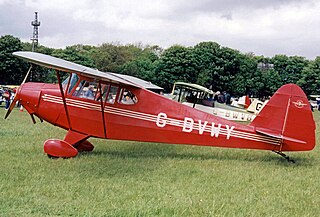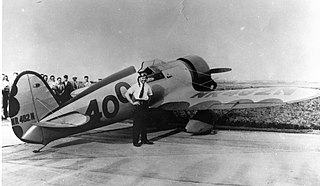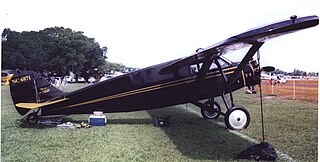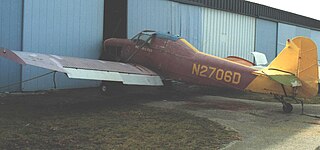
The IMCO CallAir A-9 is a small agricultural aircraft that first flew in 1962, a development of the company's previous successful crop-dusters. It is typical of aircraft of its type - a single-seat aircraft with a low wing incorporating spraying gear.

The Aero Boero AB-115 is an Argentine civil utility aircraft. It was developed from the AB-95-115, a refined AB-95 with a more powerful engine and improved aerodynamics. Specific differences included wheel spats, a redesigned engine cowling molded of fiberglass, and aluminum ailerons and flaps.

The Mooney M22 Mustang is the first attempt at a pressurized single engine aircraft by the Mooney Aircraft Company of the United States.

The Bölkow Bo 207 was a four-seat light aircraft built in West Germany in the early 1960s, a development of the Klemm Kl 107 built during World War II.

The Call-Air Model A is an American two- to three-seat utility aircraft designed by the Call brothers and built by the Call Aircraft Company, later developed into a successful line of agricultural aircraft.

The Colonial Model C-1 Skimmer was an American small single-engined amphibian flying boat built by the Colonial Aircraft Corporation. It was the start of a line of very similar aircraft designed by David Thurston.

The Porterfield Collegiate is an American-built two-seat training and touring monoplane built by the Porterfield Aircraft Corporation of Kansas City.

The Gee Bee Model Y Senior Sportster was a sport aircraft built in the United States in the early 1930s by the Granville Brothers. Essentially an enlarged two-seat version of the single-seat Sportster, it was a low-wing strut-and-wire-braced monoplane of conventional design with open cockpits and fixed tailskid undercarriage. The first of the two examples constructed remained with the Granville Brothers company and competed in many races, piloted by Maude Tait and Russell Boardman, among others. Later it also served as a support aircraft for the R-1 and R-2 racers. The second Model Y was built to order for the Cord Auto Company to be used as an engine testbed for the Lycoming R-680 engine they produced. This aircraft was later refitted with a Wright Whirlwind of nearly double the power of its original powerplant. In this form, it was flown by Florence Klingensmith at the 1933 Chicago International Races, where she won second place in the Women's Free-For-All, then perished in the aircraft after fabric became detached from the upper right wing while contesting the Phillips Trophy.
The IAR-822 was an agricultural aircraft built in Romania in the 1960s. Based on the IAR-821, it was a conventional low-wing monoplane with fixed, tailwheel undercarriage and differed from its predecessor mainly in the choice of a horizontally opposed engine in place of a radial.

The Type R "Mystery Ships" were a series of wire-braced, low-wing racing airplanes built by the Travel Air company in the late 1920s and early 1930s. They were so called, because the first three aircraft of the series were built entirely in secrecy.

The Scintex ML 250 Rubis was a French civil utility aircraft of the 1960s.

The Stinson Junior was a high-winged American monoplane of the late 1920s, built for private owners, and was one of the first such designs to feature a fully enclosed cabin.

The Rawdon T-1 was a United States light single-engined civil utility aircraft of the 1950s.
Herbert Rawdon was an American aviation pioneer. He was known throughout his life as Herb Rawdon.
The Brown Aircraft Co was an American aircraft manufacturer of the 1930s and 1940s.

The Utva-65 Privrednik (Merchant) is a Yugoslav civil aircraft designed and used for agricultural work.

The Robin DR.200 is a family of French conventional landing gear single-engined light touring or training cabin monoplanes. Originally produced by Centre Est Aéronautique the company later changed its name to Avions Pierre Robin.

The Stearman XBT-17 was a prototype 1940s American two-seat low-wing monoplane primary trainer designed and built by Stearman Aircraft. It was evaluated by the United States Army Air Force in 1942 as the XBT-17.

The Spartan C2 is a light aircraft produced in the United States in the early 1930s as a low-cost sport machine that would sell during the Great Depression.
The Aydlett A-1 was a one-off, homebuilt aircraft constructed in the US in the 1960s. It was a single seat, single engine monoplane of conventional appearance, with an enclosed cockpit.
















